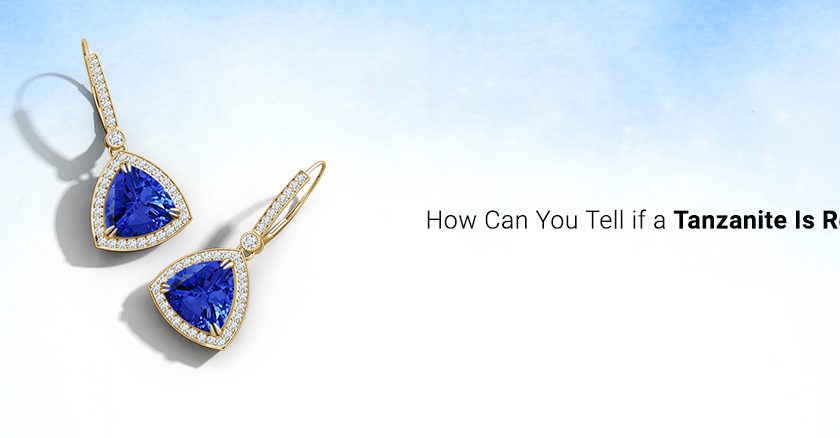When we say the words ‘one of a kind’, what’s the first gemstone that comes to mind? We bet it’s the tanzanite. Rare and brimming with intrigue, this jewel is one of the finest investment opportunities of our lifetime. That said, how do you know whether you’re buying real or fake tanzanite?
By learning how to differentiate between the two of course!
Before delving into that, let’s get ourselves acquainted with the Tanzanite
A member of the zoisite mineral group, this December birthstone is known for its intense violet-blue hue. Unlike most gems, it is pleochroic, which means that it showcases different colours when viewed from different angles.
Interestingly, it is tanzanite’s rarity that also elevates its appeal. Believe it or not, the entire tanzanite reserve of the world is limited to a mere seven square kilometer area at the base of Mount Kilimanjaro. Additionally, this gem was created under such exceptional circumstances, that the probability of it being replenished is very low. Many experts also believe the entire reserve will be depleted within 15-20 years. This intensifies the stone’s desirability and makes it an heirloom possession worthy of being passed onto future generations.
Keep the following points in mind to differentiate between a real and fake Tanzanite.
- View it from different angles
- Place it under different lights
- Verify its refractiveness
- Place it under a jeweller’s loupe
#1: View it from different angles
As touched upon before, tanzanites are pleochroic. With this in mind, a great way to test the authenticity of the stone is to view it from different angles. If you notice slight colour differences on different sides of the stone (one side may appear more blue or purple than the other), it means that your jewel is probably real.
#2: Place it under different lights
Due to the gem’s pleochroism, its hue tends to vary when in contact with different types of light. Therefore, to cheque its authenticity, view the jewel in natural light and then place it under incandescent light. In natural light, real tanzanites usually showcase a blue hue with a tinge of purple. Under incandescent light, however, the gem will appear more purple and may even display some red or pink flashes.
#3: Verify its refractiveness
Tanzanites are known for being doubly refractive. To cheque this, view the stone through a dichroscope. You should see two windows when you do this. If each window holds a different colour, it means that your stone is doubly refractive and is probably authentic.
#4: Place it under a jeweller’s loupe
More often than not, these gemstones are eye-clean, which means that they do not have any flaws that are visible to the naked eye. Having said that, when viewed under a jeweller’s loupe, tanzanites usually display several inclusions. For the most accurate result, hold the stone against the light and view it through a 10x jewellers loupe. If you can’t find any flaws, it could mean that your stone is a fake.
Important Note
Identifying real gemstone from fake one can be a challenge. If you’re still unsure about the authenticity of your tanzanite, then we recommend visiting a professional jeweller as they’ll be able to spot a fake one with 100% accuracy.
We hope this helped!




























